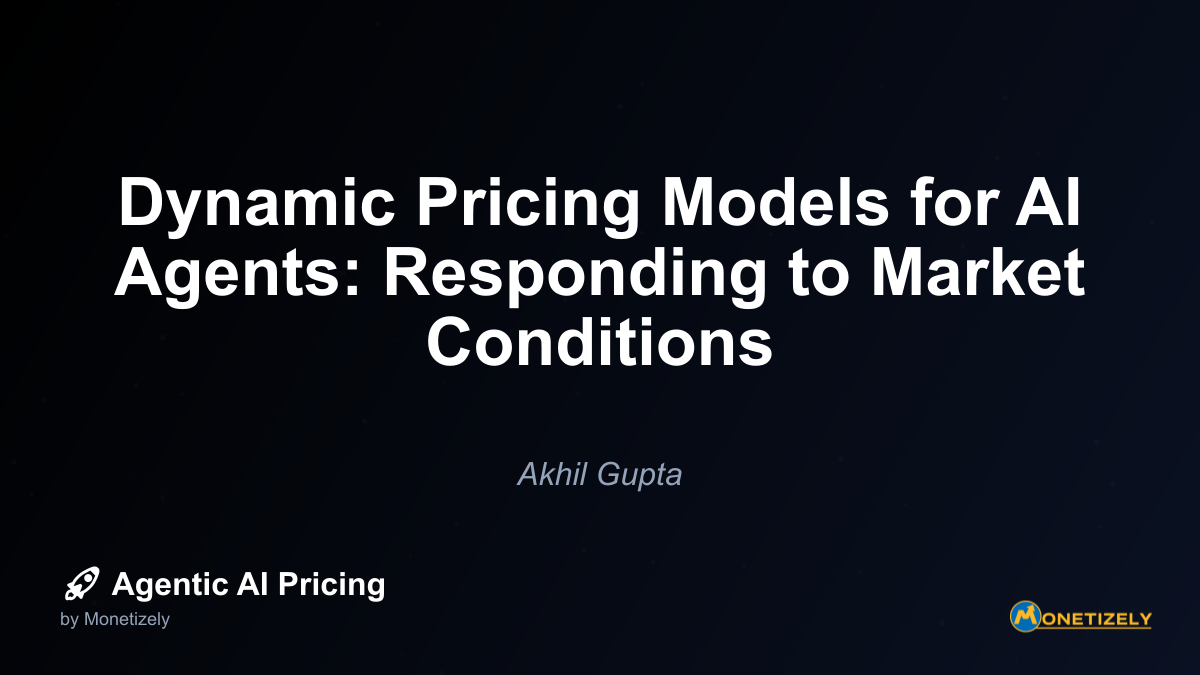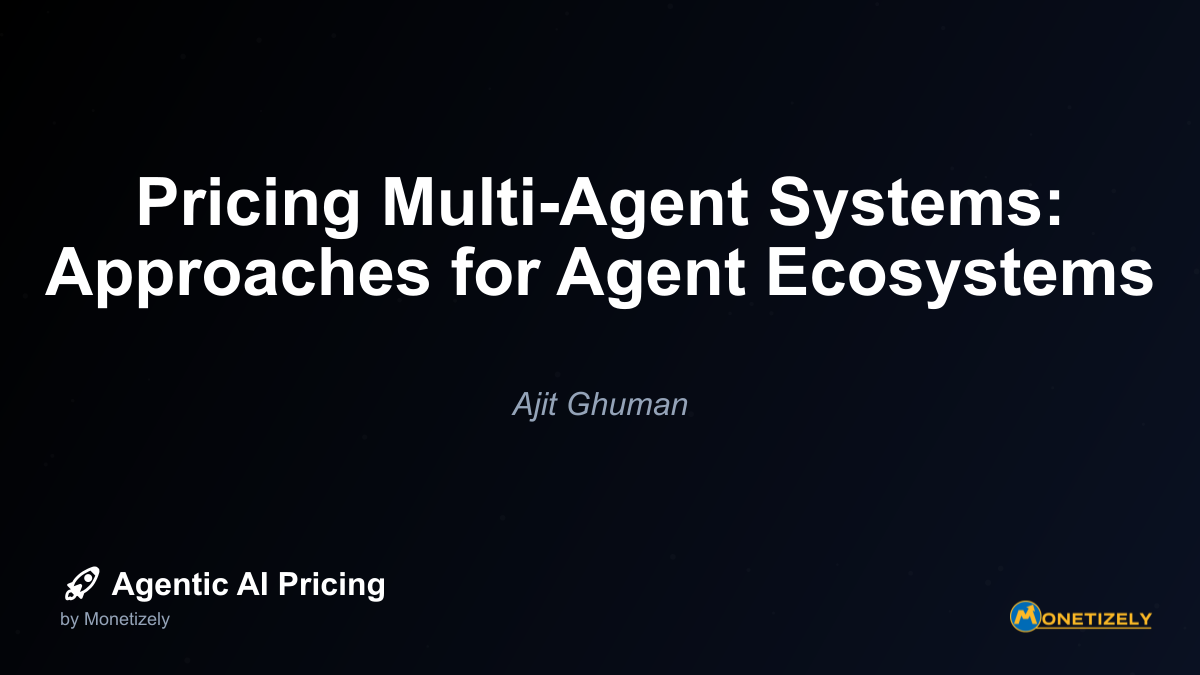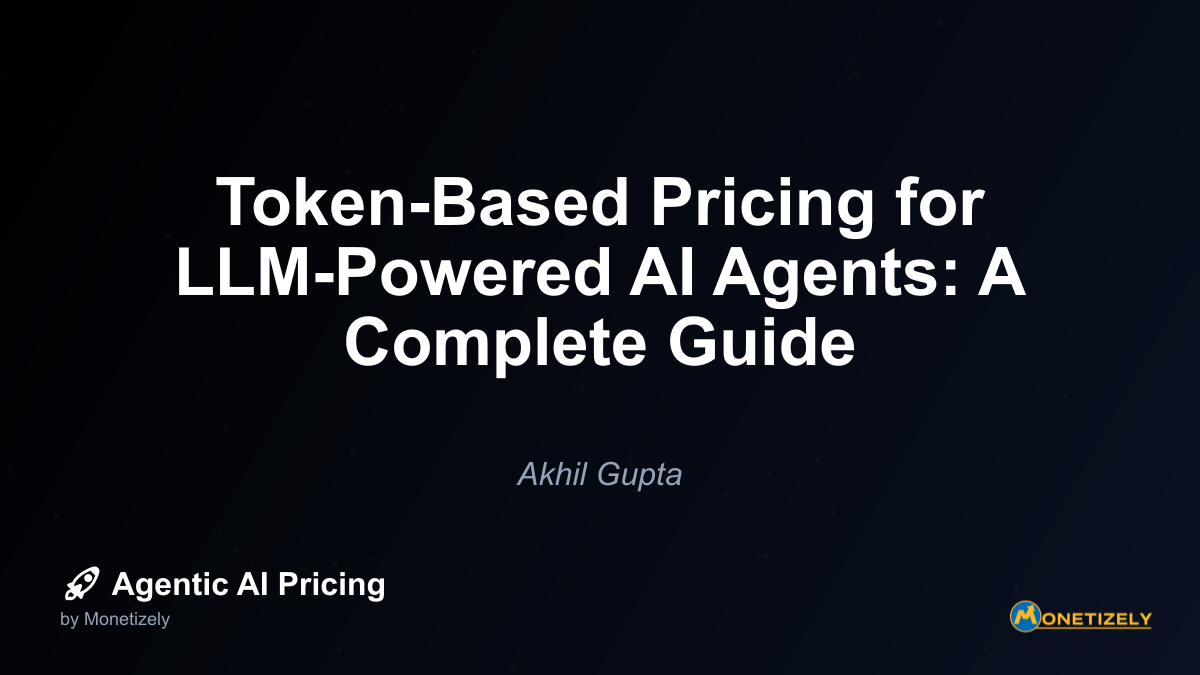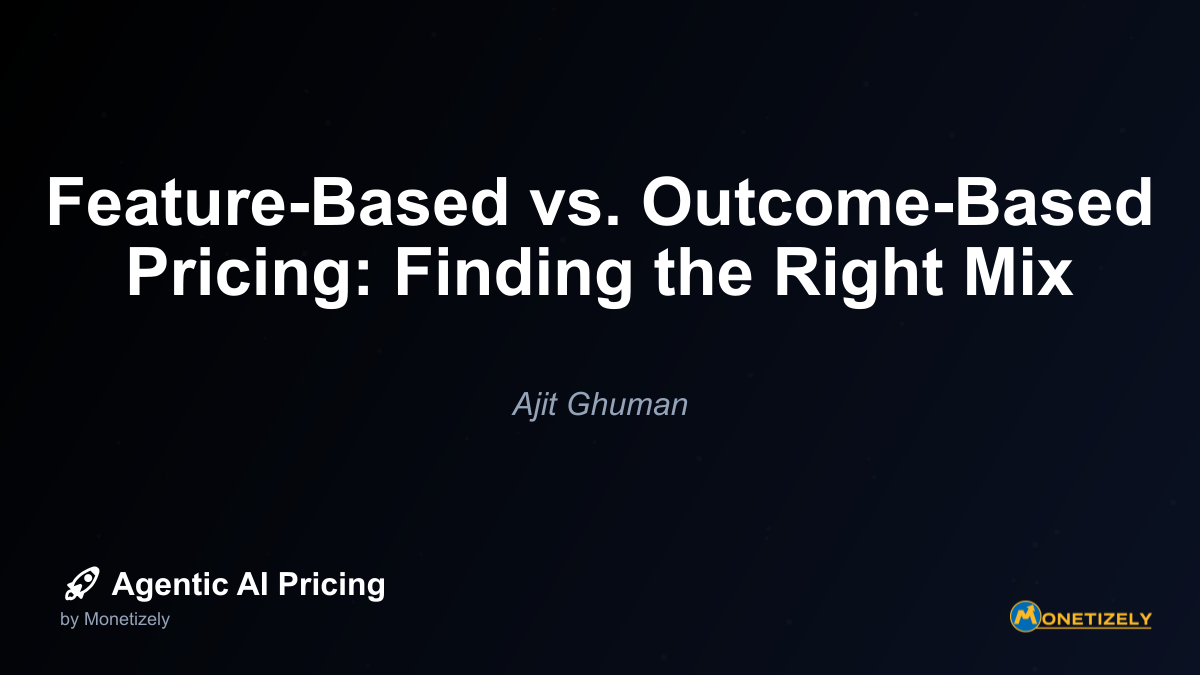· Ajit Ghuman · AI Pricing Models · 7 min read
Building Usage-Based Pricing That Customers Trust
AI and SaaS Pricing Masterclass
Learn the art of strategic pricing directly from industry experts. Our comprehensive course provides frameworks and methodologies for optimizing your pricing strategy in the evolving AI landscape. Earn a professional certification that can be imported directly to your LinkedIn profile.
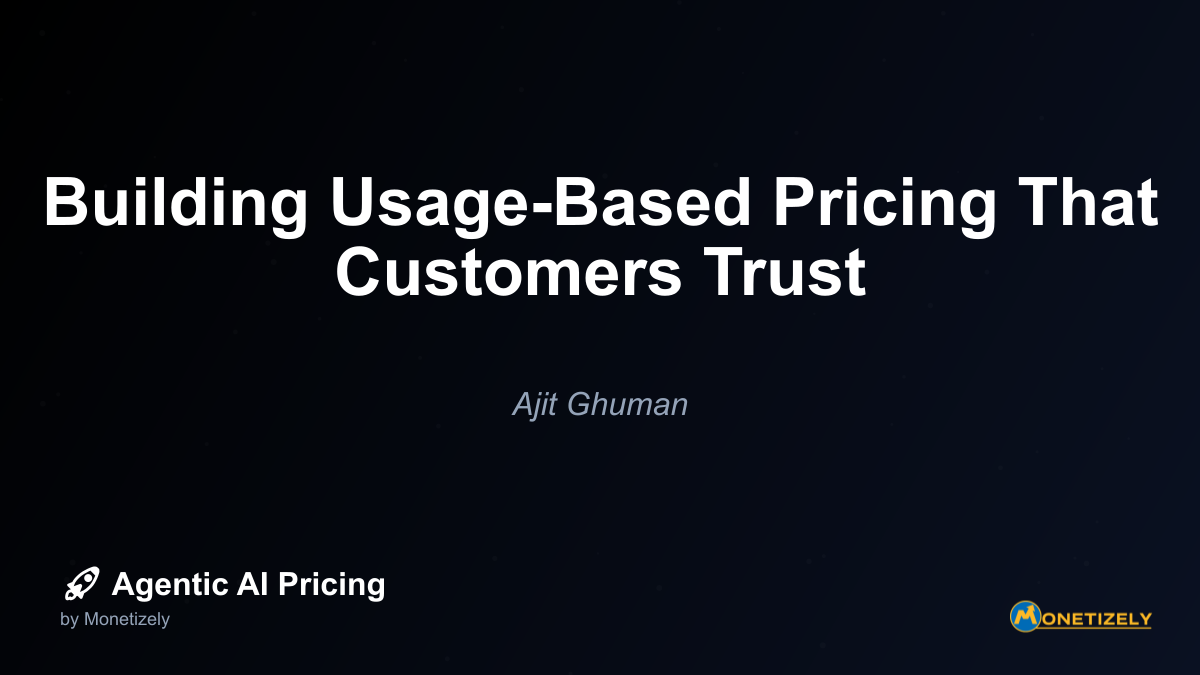
4. Proactive Communication Systems
Beyond systems and structures, how you communicate about usage and billing significantly impacts trust.
Communication best practices include:
- Pre-billing summaries: Sending usage reports before finalizing charges
- Anomaly notifications: Proactively alerting customers to unusual usage patterns
- Educational resources: Providing guides and tools to help optimize consumption
- Consumption forecasting: Offering predictive analytics to anticipate future costs
Stripe has mastered this approach with their pre-billing summaries that arrive several days before charging, giving customers time to review their usage and address any concerns.
Implementing Trust-Building Mechanisms
Clear Usage Metrics Selection
The metrics you choose to measure and bill for fundamentally shape the customer experience. Selecting the right usage metrics requires balancing several factors:
Criteria for effective usage metrics:
- Value alignment: Metrics should correlate directly with the value customers receive
- Customer controllability: Customers should be able to influence their consumption through their actions
- Intuitive understanding: Metrics should be easy to conceptualize and explain
- Technical measurability: Metrics must be consistently and accurately trackable
MongoDB’s shift from infrastructure-based metrics (server instances) to value-based metrics (data processed) demonstrates how metric selection can transform the customer relationship. By focusing on metrics that directly correlate with business value, they created stronger trust in their pricing model.
Building Consumption Visibility Tools
Effective usage dashboards don’t just display numbers—they create understanding and control.
Key dashboard components:
- Current period tracking: Clear visualization of usage in the current billing cycle
- Trend analysis: Historical patterns to contextualize current consumption
- Forecasting tools: Projections based on historical patterns and current trajectory
- Granular filtering: Ability to analyze usage by project, team, or other relevant dimensions
- Export capabilities: Options to download raw data for independent analysis
New Relic’s consumption UI exemplifies these principles with its detailed breakdown of usage across different services and the ability to analyze consumption patterns over time.
Implementing Billing Guardrails
Even with perfect transparency, unexpected usage spikes can damage trust. Implementing guardrails provides customers with control and confidence.
Effective guardrails include:
- Customizable spending limits: Allowing customers to set maximum billing thresholds
- Graduated response options: Offering choices between stopping service, throttling usage, or continuing with alerts when limits are reached
- Override mechanisms: Providing authorized users ways to temporarily extend limits when necessary
- Grace periods: Building in time buffers before implementing restrictive measures
Twilio’s approach includes customizable spending limits that allow customers to set thresholds at which they receive alerts or service is temporarily paused, giving them ultimate control over their billing experience.
Creating Educational Resources
Customers who understand how to optimize their usage develop deeper trust in your pricing model.
Valuable educational resources include:
- Usage optimization guides: Specific tactics to maximize value while controlling costs
- Consumption benchmarks: Industry standards that help contextualize usage levels
- Cost calculators: Interactive tools to model different usage scenarios
- Best practice documentation: Recommended implementation approaches that enhance efficiency
Datadog exemplifies this approach with their comprehensive documentation on how to optimize queries and storage to maintain performance while controlling costs.
Addressing Common Trust Challenges
Managing Usage Spikes
Sudden increases in usage present one of the biggest threats to billing trust. Implementing systems to detect and manage these events is crucial.
Strategies for handling usage spikes:
- Anomaly detection algorithms: Automatically identifying unusual consumption patterns
- Progressive alerting: Escalating notification frequency and urgency as usage increases
- Temporary rate limiting: Optional automatic throttling when predefined thresholds are reached
- Post-spike analysis tools: Helping customers understand what caused unusual activity
DigitalOcean handles this challenge effectively by sending progressively urgent notifications as customers approach spending thresholds, combined with optional automatic pausing of resource-intensive services.
Simplifying Complex Usage Models
As businesses add products and features, usage models often grow increasingly complex, potentially undermining trust through confusion.
Simplification approaches:
- Consumption aggregation: Combining related metrics into unified measures
- Standardized units: Creating consistent measurement units across product lines
- Bundled allowances: Offering packages of various usage types under simplified structures
- Consumption visualization: Creating intuitive graphics that explain complex relationships
Fastly addresses this challenge by consolidating various technical metrics into a single “request unit” concept that simplifies understanding across their diverse service offerings.
Handling Multi-User Organizations
Enterprise customers face unique challenges in understanding and controlling usage across large teams.
Enterprise-focused trust features:
- Hierarchical visibility: Allowing administrators to view usage by department, team, and individual
- Delegated controls: Enabling department-level management of usage limits and notifications
- Cost allocation tools: Facilitating internal chargebacks based on actual consumption
- Role-based access: Providing appropriate visibility and control based on organizational position
GitHub’s enterprise offering demonstrates these principles with team-level usage analytics and controls that help large organizations manage costs while maintaining visibility.
The Future of Trust in Usage-Based Pricing
As usage-based models continue to evolve, several emerging trends will shape how trust is built and maintained:
Blockchain-Based Verification
Distributed ledger technologies offer new possibilities for creating immutable, transparent records of usage that both vendors and customers can independently verify. This approach could fundamentally transform trust by removing the need to rely solely on vendor-controlled metering systems.
AI-Powered Usage Optimization
Artificial intelligence is enabling more sophisticated approaches to usage forecasting and optimization. These tools can analyze patterns to recommend specific actions that reduce costs while maintaining performance, further enhancing customer confidence.
AI pricing models are increasingly incorporating trust-building mechanisms as core features rather than afterthoughts, recognizing that transparent pricing is essential for customer adoption.
Collaborative Industry Standards
Industry associations are beginning to develop standardized approaches to usage measurement and billing transparency. These emerging standards will create consistent expectations across vendors, simplifying the customer experience and raising the bar for trust-centered practices.
Building Your Trust-Centered Pricing Strategy
Creating a usage-based pricing model that customers trust requires a systematic approach:
1. Audit Your Current Trust Mechanisms
Begin by evaluating your existing systems against the trust principles outlined above:
- How transparent is your metering?
- What visibility do customers have into their ongoing consumption?
- How predictable is your billing?
- What guardrails exist to prevent bill shock?
Identify specific gaps where customers might experience uncertainty or anxiety about your pricing model.
2. Prioritize Improvements Based on Customer Feedback
Direct customer input should guide your trust-building investments:
- Conduct focused interviews about billing confidence
- Analyze support tickets related to billing questions
- Review cancellation reasons for pricing-related concerns
- Monitor usage patterns for signs of “usage anxiety” (such as artificially restricted consumption)
Use these insights to prioritize the most impactful trust enhancements.
3. Implement a Phased Approach
Building comprehensive trust systems takes time. Consider a staged implementation:
Phase 1: Basic transparency
- Clear documentation of metering methodology
- Simple usage dashboards with current consumption
- Basic notification systems for threshold crossings
Phase 2: Enhanced control
- Customizable spending limits
- Granular usage visibility
- Historical trend analysis
Phase 3: Proactive optimization
- Usage forecasting
- Optimization recommendations
- Anomaly detection and alerts
This incremental approach allows you to deliver value quickly while building toward a comprehensive trust framework.
4. Continuously Measure Trust Metrics
Establish specific measurements to track improvements in billing trust:
- Reduction in billing-related support tickets
- Decreased time reviewing usage reports (indicating greater confidence)
- Improved scores on billing-specific customer satisfaction questions
- Reduced churn related to billing concerns
- Increased willingness to expand usage (indicating confidence in the model)
These metrics provide objective feedback on your trust-building efforts.
The Competitive Advantage of Trusted Pricing
In the increasingly crowded SaaS marketplace, pricing trust can become a significant competitive differentiator. Consumption-based models are rapidly gaining market share, but customers are becoming more discriminating about which vendors they trust with variable billing relationships.
Companies that excel at creating transparent, predictable usage-based experiences enjoy several advantages:
- Accelerated sales cycles: Prospects convert more quickly when they have confidence in the billing relationship
- Expanded product adoption: Customers use more services when they trust the pricing model
- Reduced price sensitivity: Trust reduces the emphasis on direct price comparisons
- Higher retention rates: Customers stay longer with vendors they trust
- Positive word-of-mouth: Transparent pricing becomes a marketable differentiator
These advantages compound over time, creating sustainable growth advantages for companies that prioritize trust in their pricing design.
Conclusion
Usage-based pricing represents a powerful alignment between vendor economics and customer value, but its effectiveness ultimately depends on trust. By implementing transparent metering systems, providing real-time usage visibility, creating predictable billing structures, and establishing appropriate guardrails, companies can build pricing models that customers embrace rather than fear.
The most successful usage-based pricing strategies recognize that trust isn’t just about technical systems—it’s about creating an overall experience where customers feel informed, in control, and confident. When customers trust your pricing, they stop focusing on costs and start focusing on value, creating the foundation for lasting, mutually beneficial relationships.
As you evolve your pricing strategy, remember that trust-building isn’t a one-time project but an ongoing commitment. The companies that continuously invest in pricing transparency and predictability will be the ones that thrive in the usage-based economy.
Co-Founder & CEO
Ajit is the author of Price To Scale, a top book on SaaS Pricing and is the Founder of Monetizely. Ajit has led and worked in pricing and product marketing at firms like Twilio, Narvar and Medallia. His work has been featured in Forbes and VentureBeat. Ajit regularly consults with software companies from Seed stage to post-IPO on pricing strategy. Ajit is also a highly-rated co-instructor for 'The Art of SaaS Pricing and Monetization' on Maven.
Pricing Strategy Audit
Let our experts analyze your current pricing strategy and identify opportunities for improvement. Our data-driven assessment will help you unlock untapped revenue potential and optimize your AI pricing approach.

